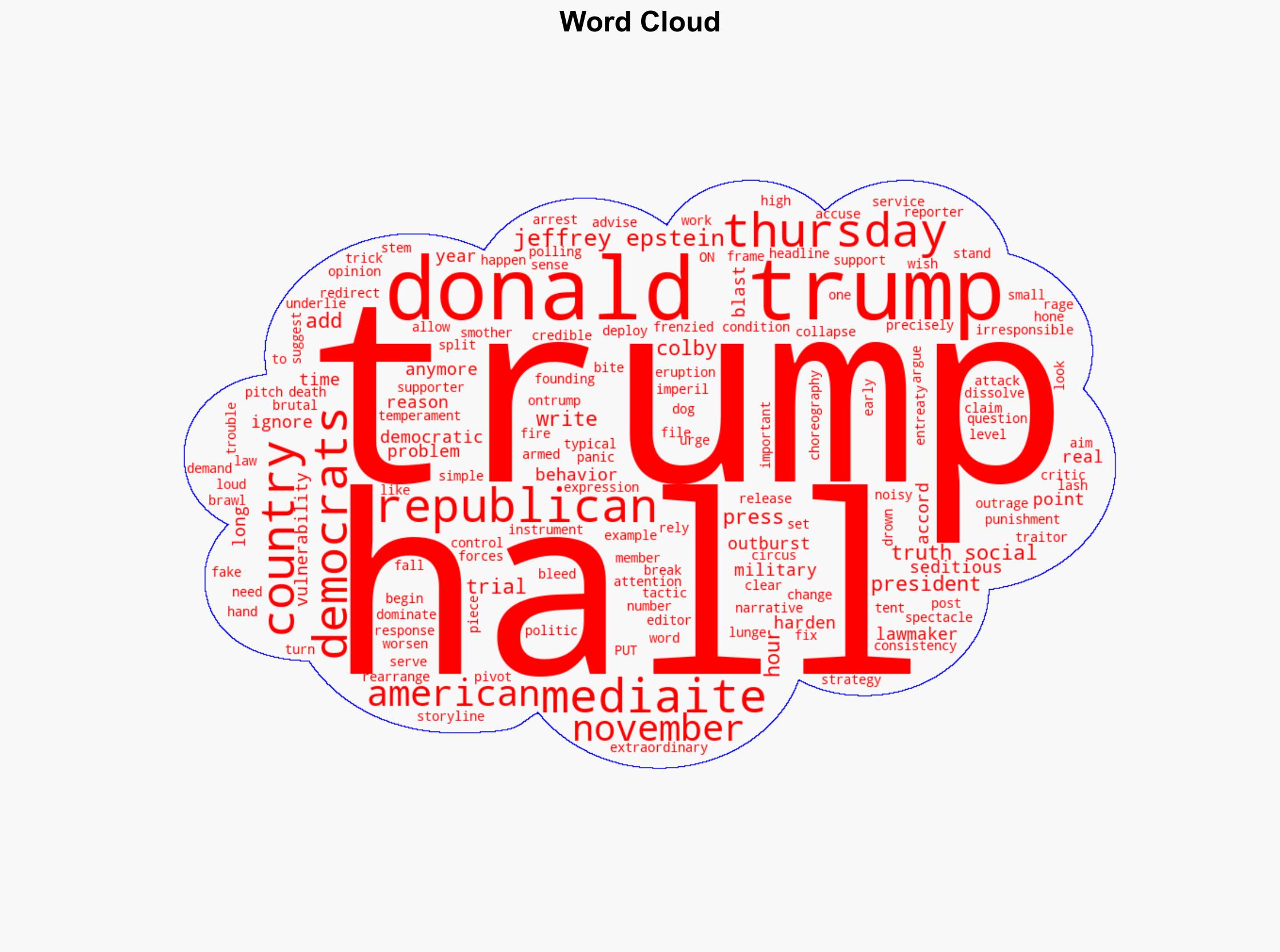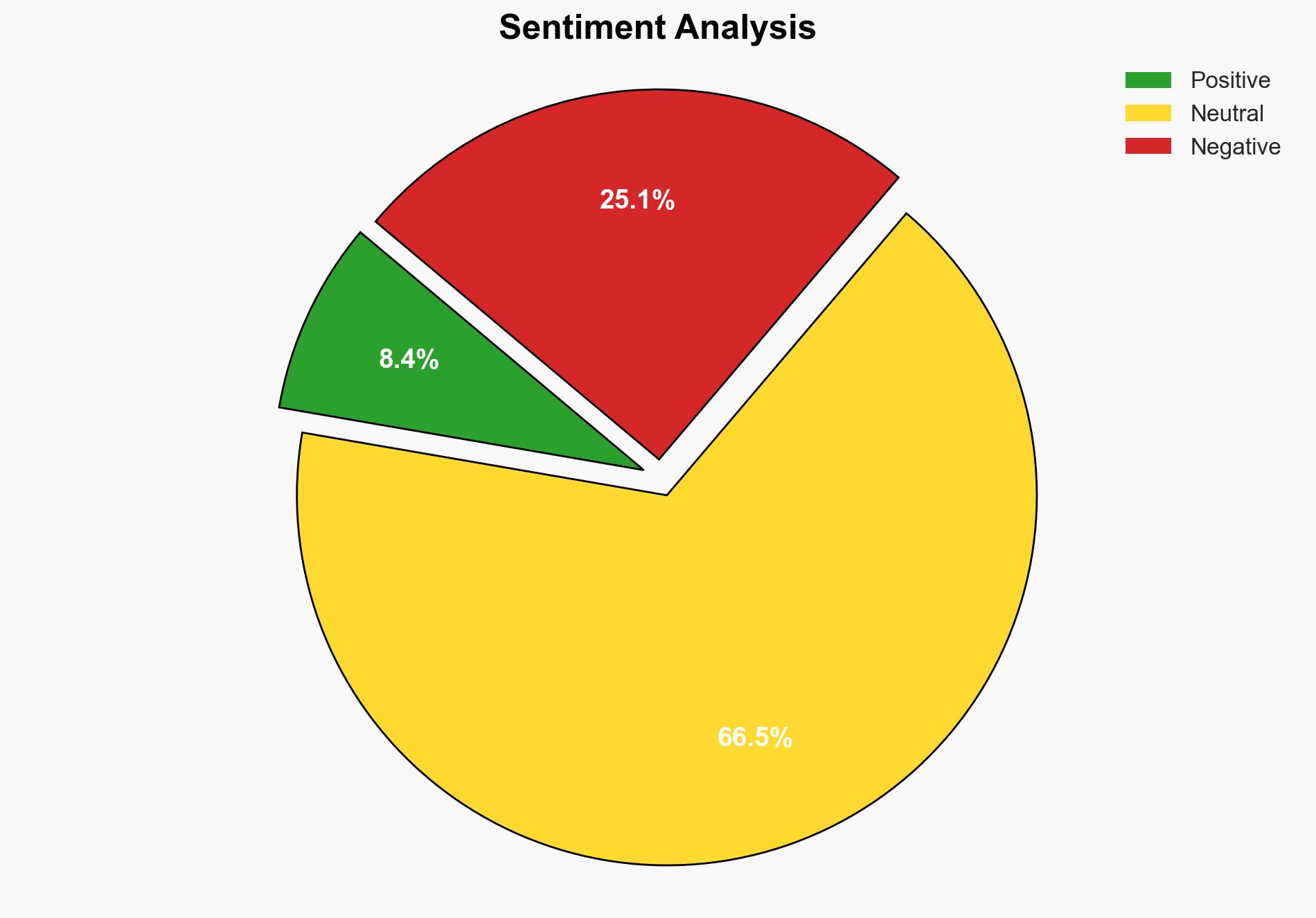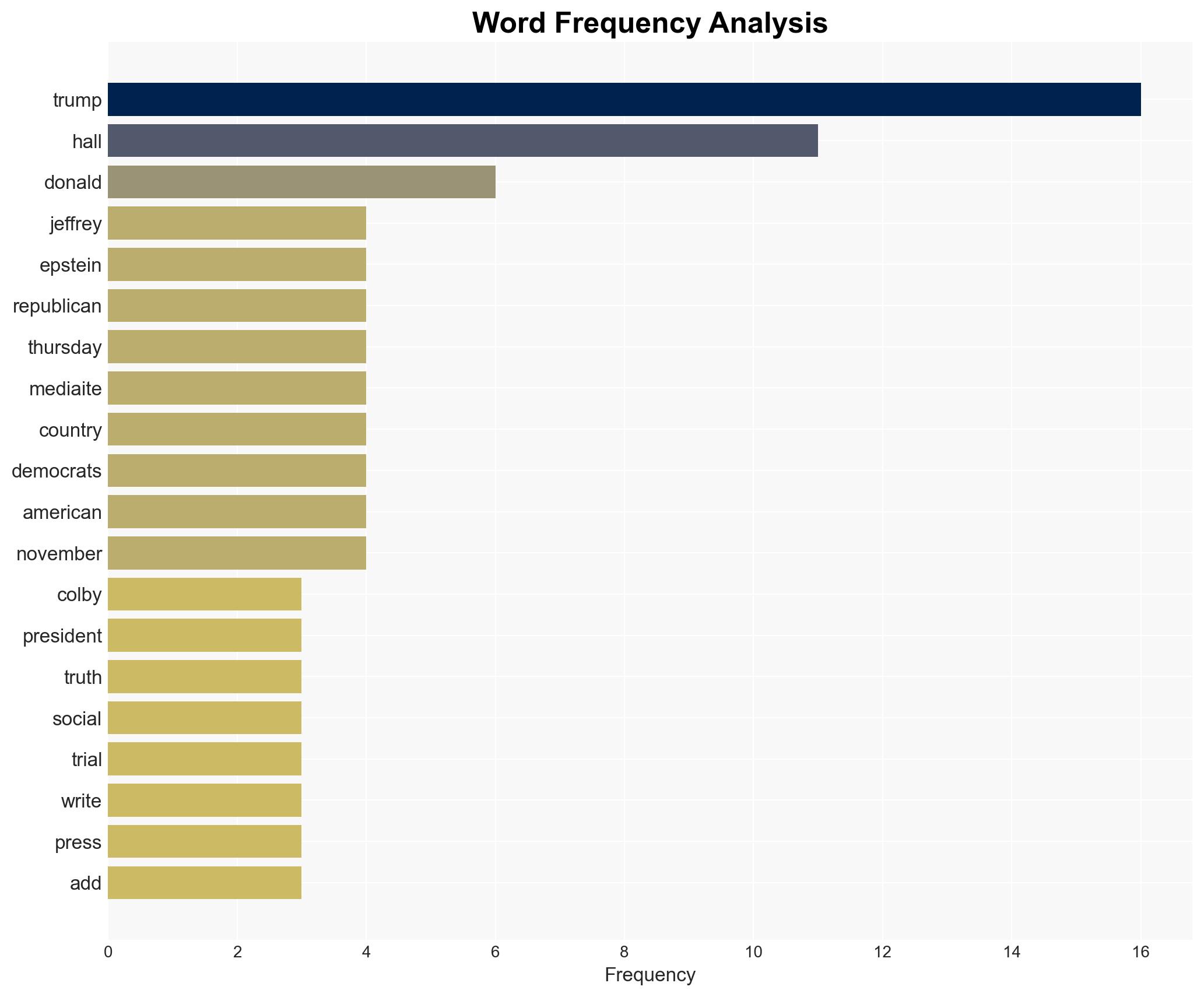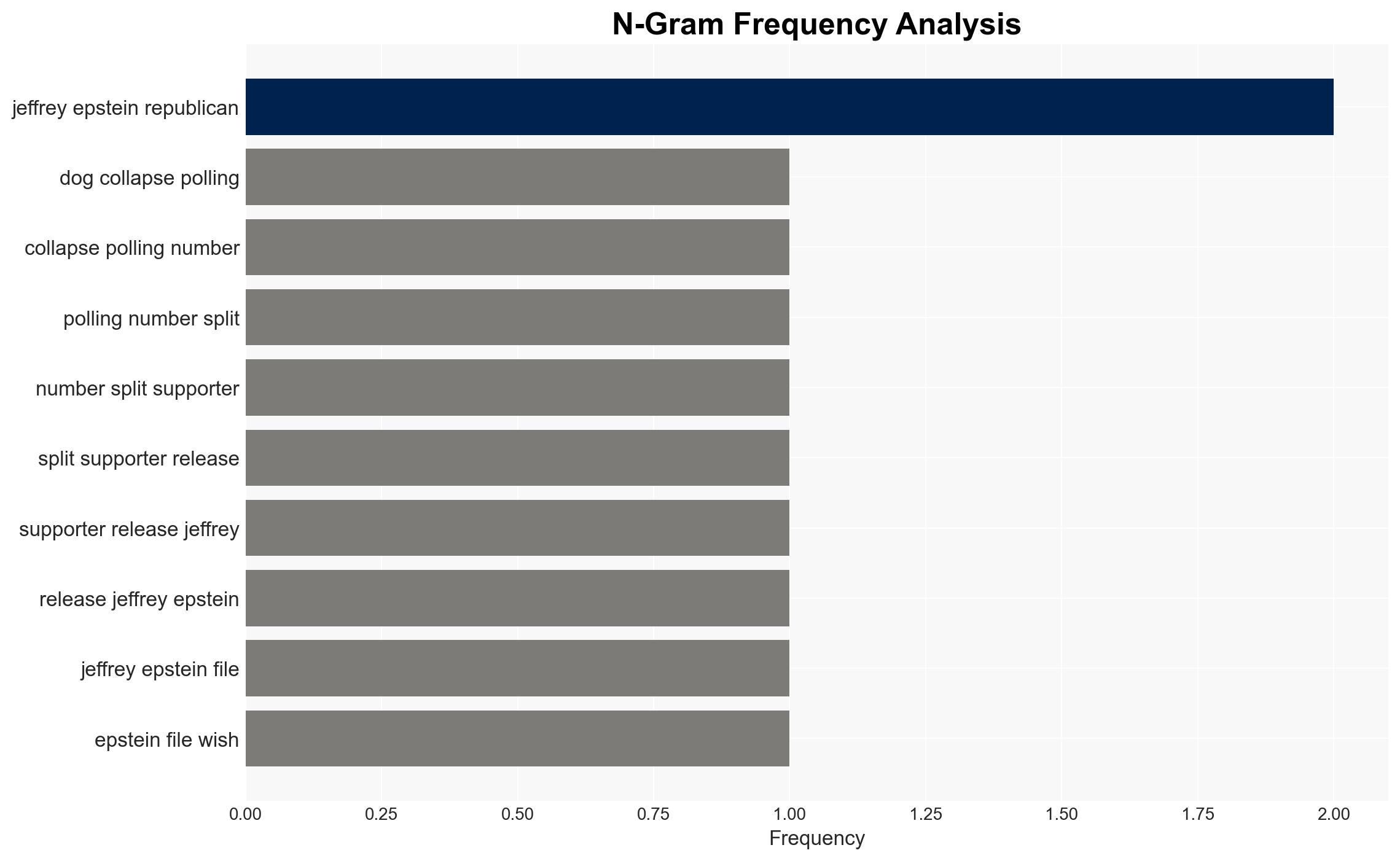Trump busted over ‘panic move’ frenzy A pattern ‘too obvious to ignore’ – Raw Story
Published on: 2025-11-20
AI-powered OSINT brief from verified open sources. Automated NLP signal extraction with human verification. See our Methodology and Why WorldWideWatchers.
Intelligence Report:
1. BLUF (Bottom Line Up Front)
With a moderate confidence level, the most supported hypothesis is that Donald Trump’s recent outbursts are strategic attempts to divert attention from declining support and potential legal challenges. The recommended action is to monitor Trump’s communications for shifts in narrative focus and to assess the impact on political stability and public sentiment.
2. Competing Hypotheses
Hypothesis 1: Trump’s recent actions are a calculated strategy to distract from declining polling numbers and legal issues by creating a media frenzy and shifting the narrative.
Hypothesis 2: Trump’s behavior is a genuine reaction to perceived threats and criticism, reflecting his impulsive and reactionary nature rather than a strategic maneuver.
Hypothesis 1 is more likely due to the historical pattern of Trump’s use of media tactics to control narratives and the timing of his actions coinciding with negative developments in his political and legal landscape.
3. Key Assumptions and Red Flags
Assumptions: It is assumed that Trump’s actions are primarily driven by a desire to maintain political influence and public support. It is also assumed that media coverage plays a significant role in shaping public perception.
Red Flags: The potential for misinformation or deliberate deception in Trump’s communications should be considered, given his history of controversial statements and media manipulation.
4. Implications and Strategic Risks
The primary risk is the potential for increased political polarization and instability, as Trump’s actions may exacerbate divisions within the Republican Party and between political factions. There is also a risk of misinformation spreading, which could impact public trust in media and institutions. Escalation scenarios include intensified political rhetoric leading to civil unrest or challenges to democratic processes.
5. Recommendations and Outlook
- Monitor Trump’s communications for shifts in narrative focus and assess the impact on political stability and public sentiment.
- Engage in proactive media literacy campaigns to counter misinformation and promote informed public discourse.
- Best-case scenario: Trump’s actions are recognized as strategic diversions, leading to increased scrutiny and accountability.
- Worst-case scenario: Escalation of political tensions resulting in civil unrest or challenges to democratic processes.
- Most-likely scenario: Continued media focus on Trump’s actions, with fluctuating public opinion and political dynamics.
6. Key Individuals and Entities
Donald Trump, Colby Hall, Jeffrey Epstein
7. Thematic Tags
Cybersecurity, Media Manipulation, Political Strategy, Public Sentiment
Structured Analytic Techniques Applied
- Adversarial Threat Simulation: Model and simulate actions of cyber adversaries to anticipate vulnerabilities and improve resilience.
- Indicators Development: Detect and monitor behavioral or technical anomalies across systems for early threat detection.
- Bayesian Scenario Modeling: Quantify uncertainty and predict cyberattack pathways using probabilistic inference.
Explore more:
Cybersecurity Briefs ·
Daily Summary ·
Support us





